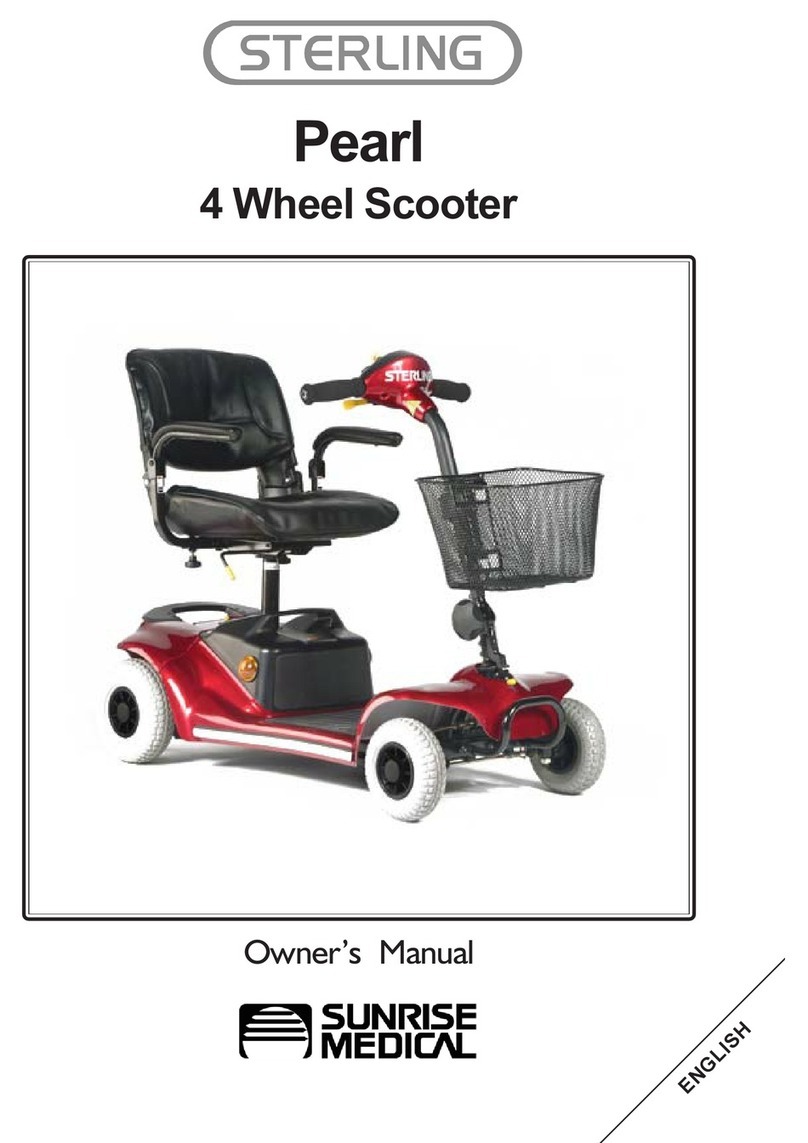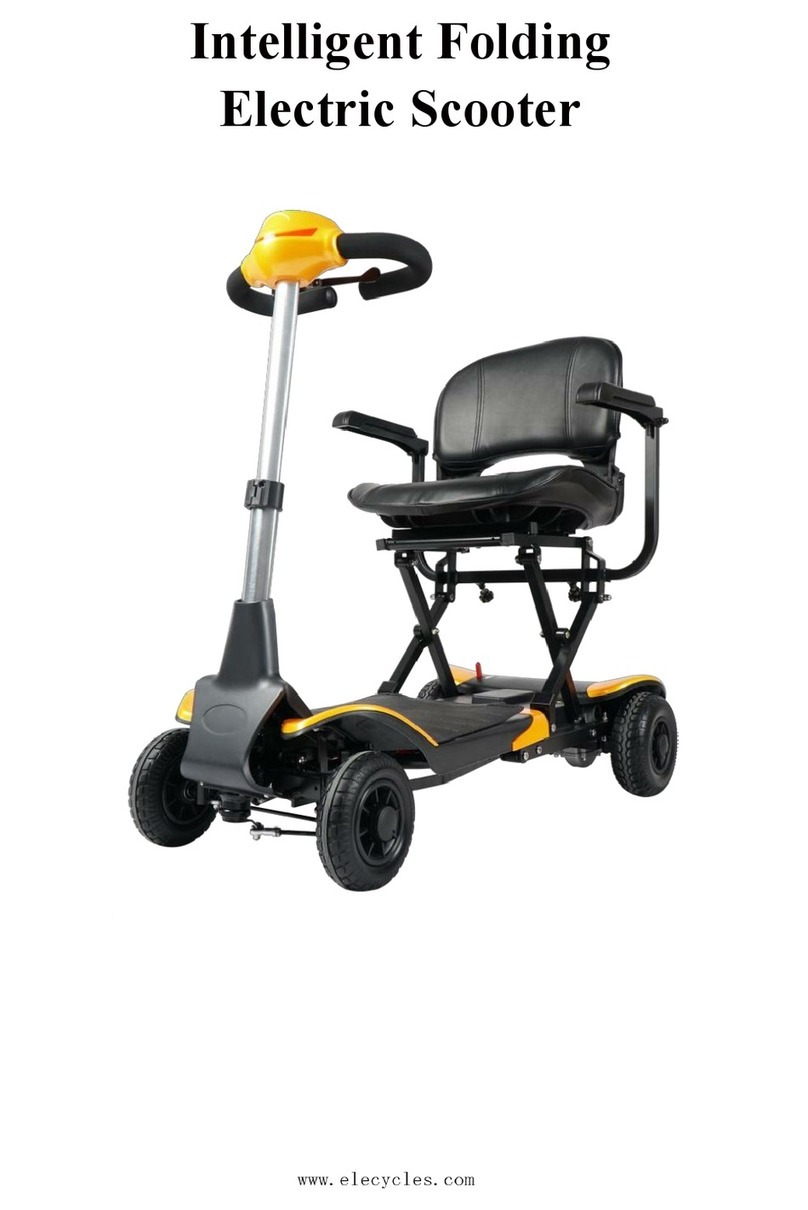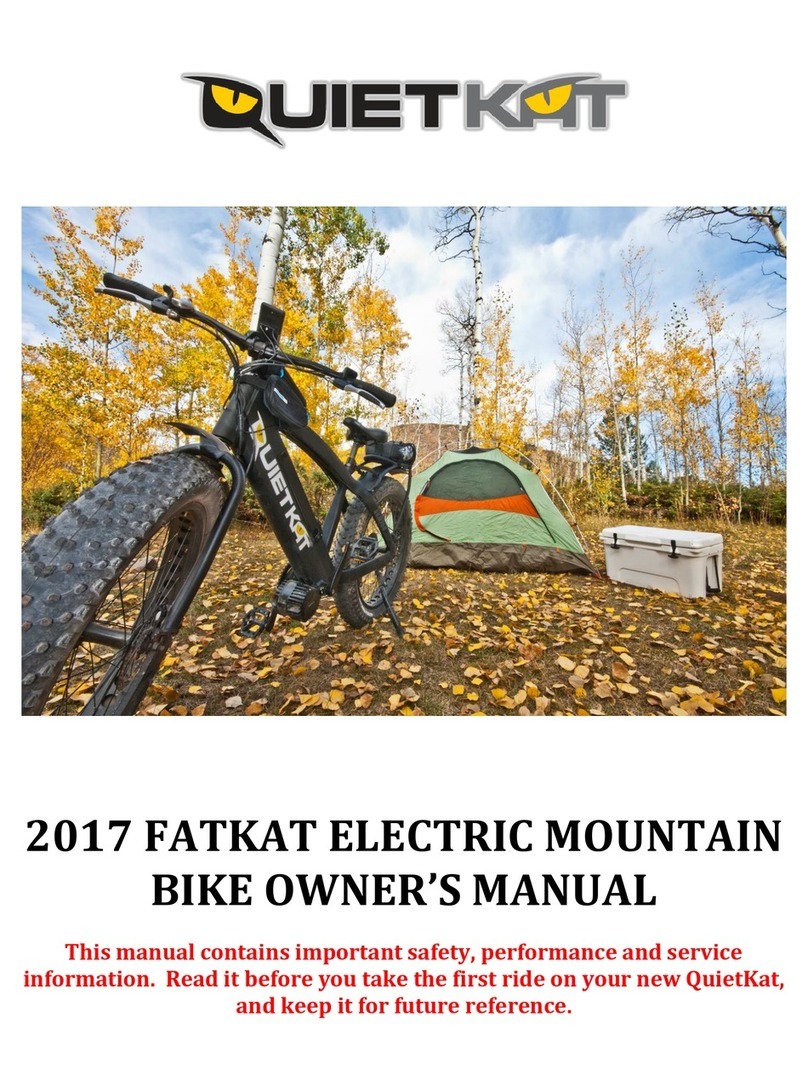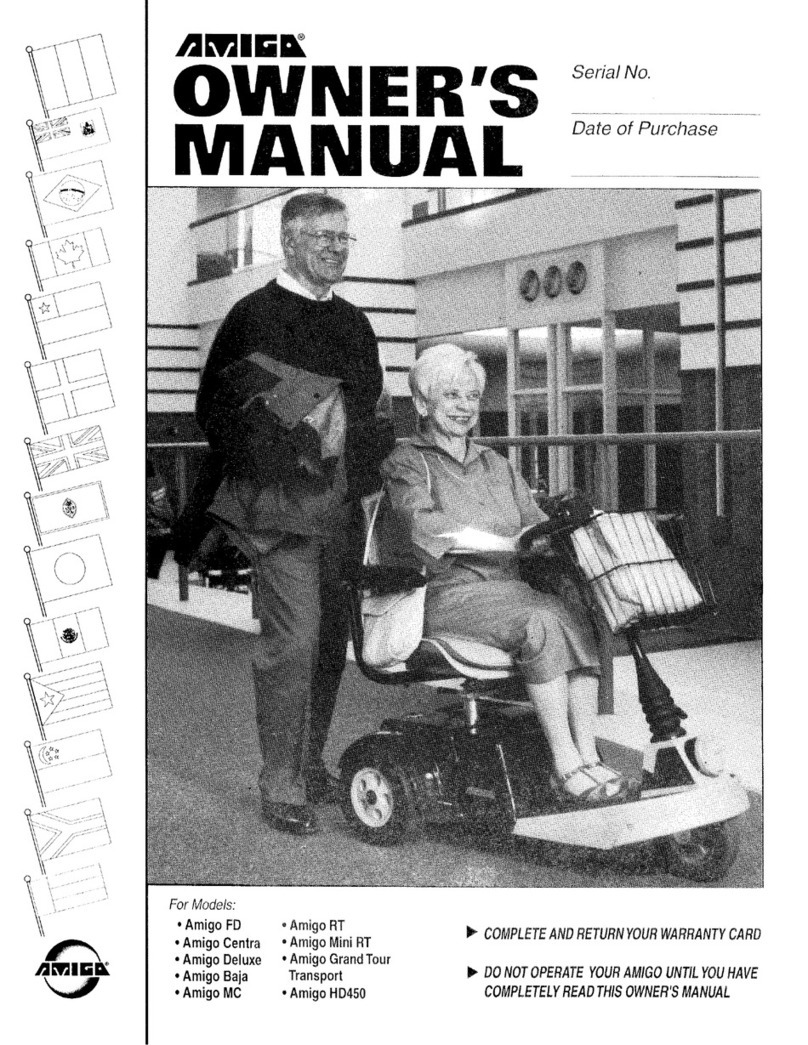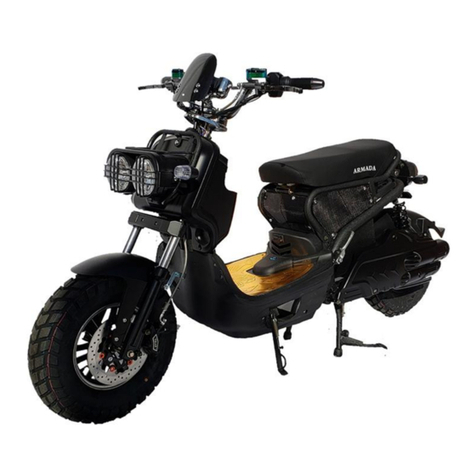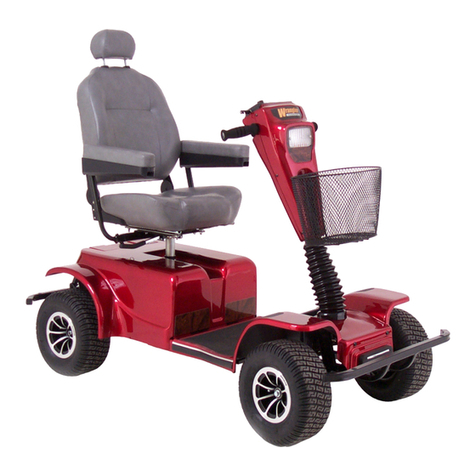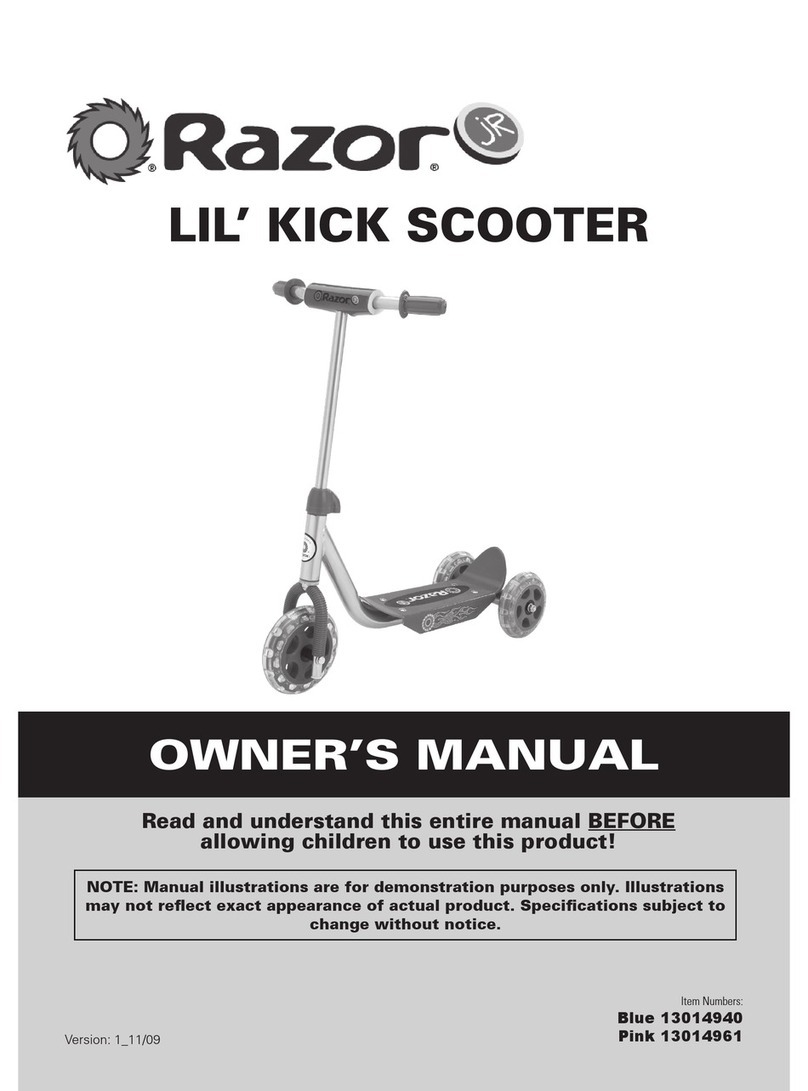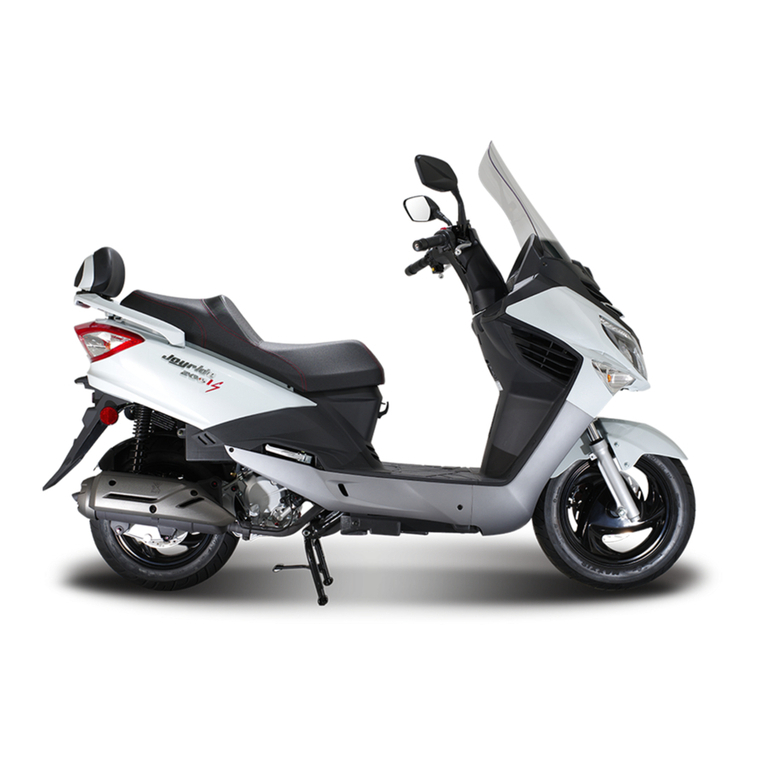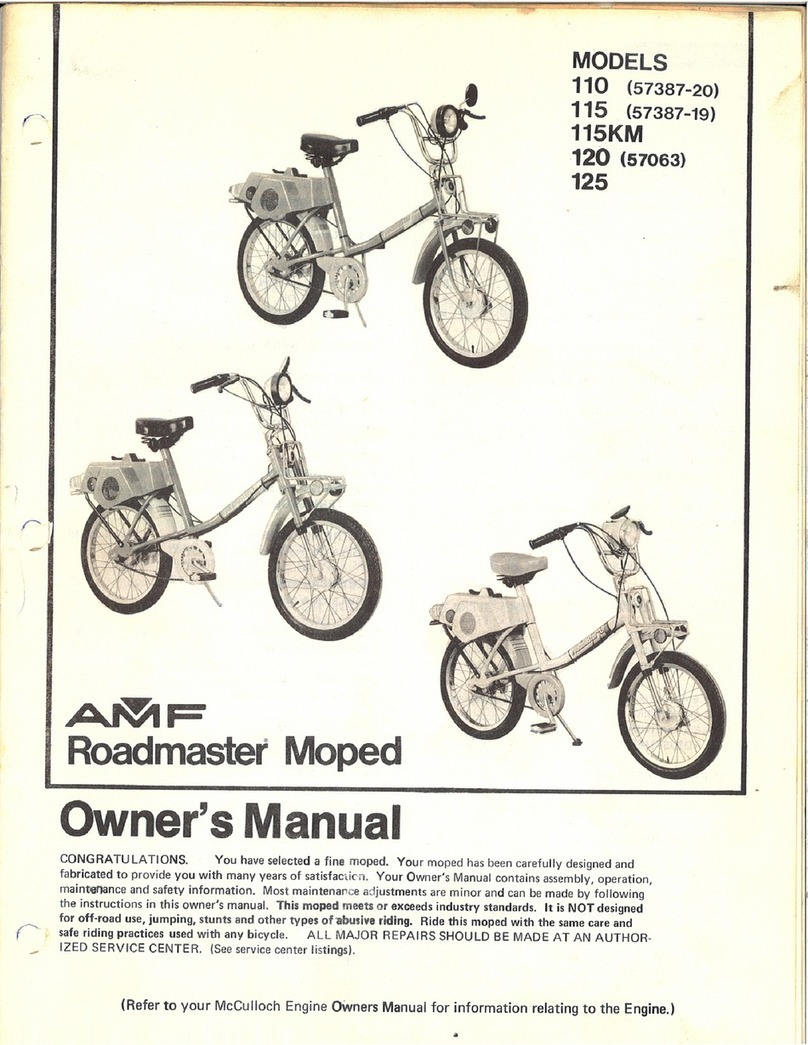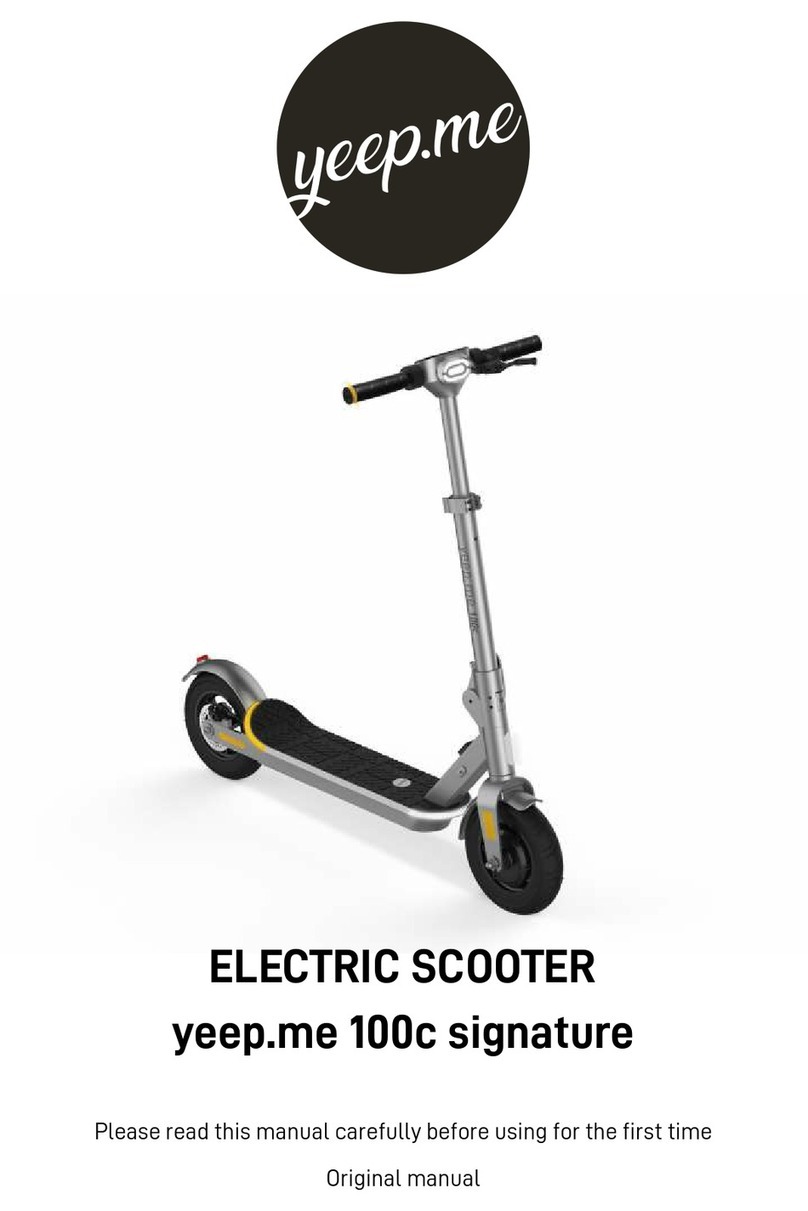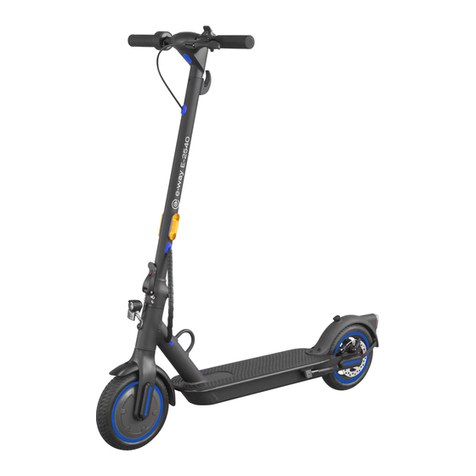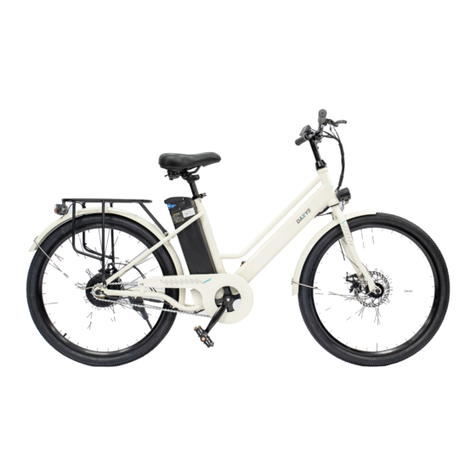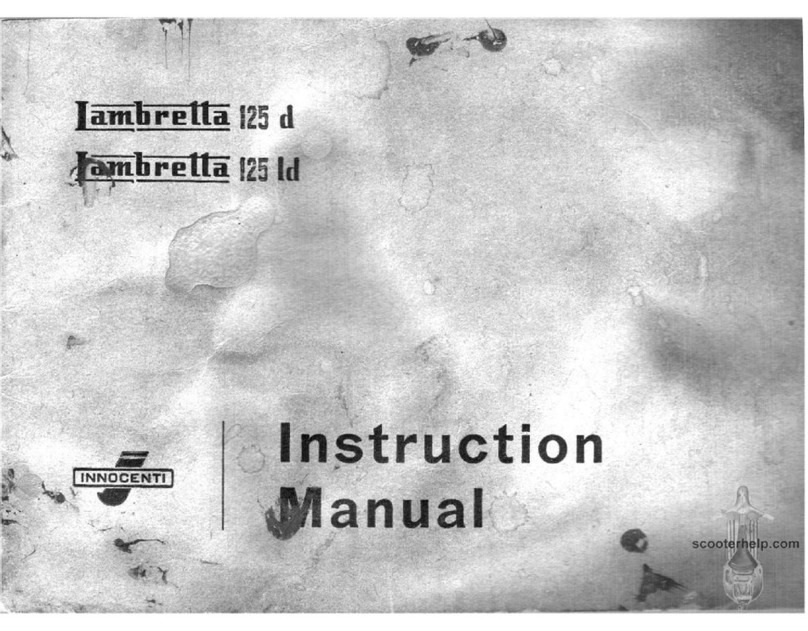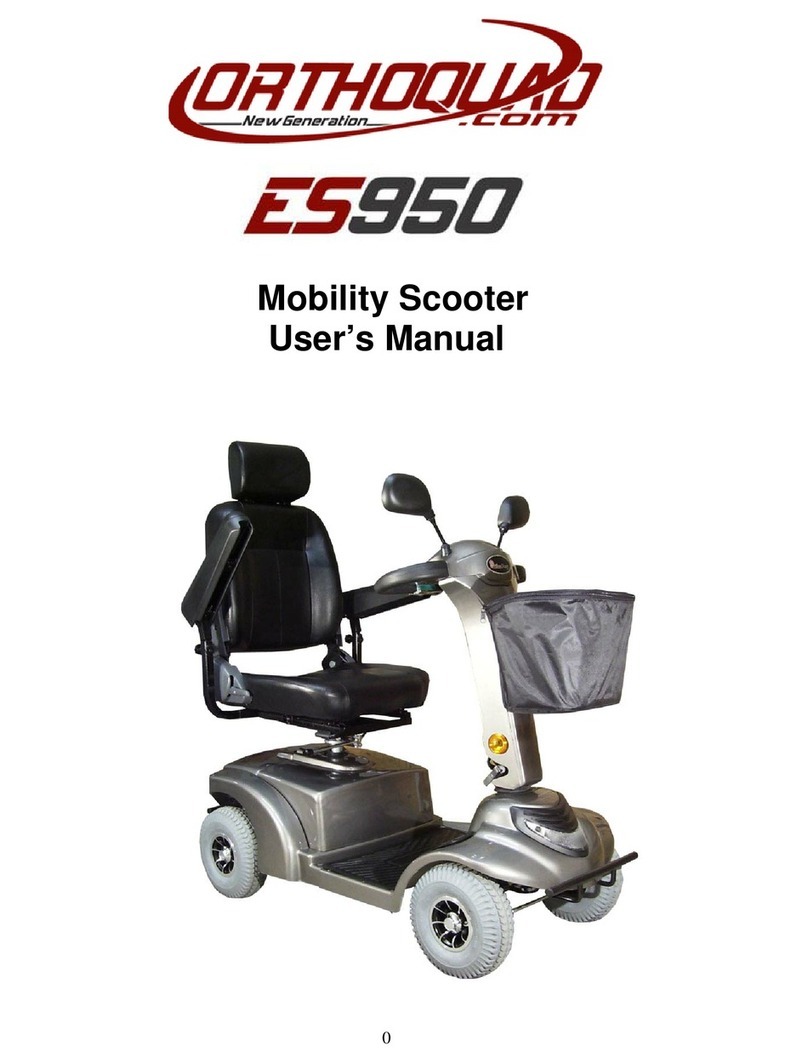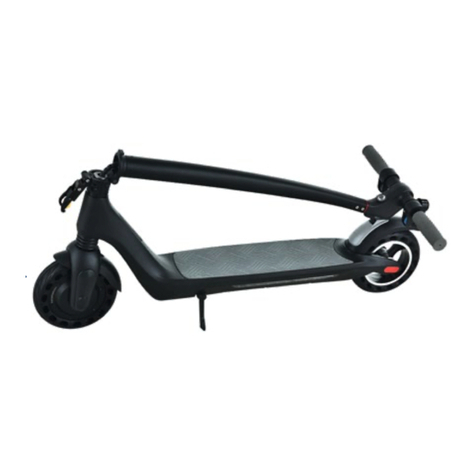Sterling Ruby User manual

ENGLISH
Owner’s Manual
Ruby - Ruby Plus

2I. Introduction
I. INTRODUCTION
Thank you for choosing a Sunrise Medical wheelchair. Before using your wheelchair please
read this manual carefully. It will provide you with all the information you will require.
However, if you have any queries about the use, maintenance or safety of your wheelchair
please contact your local Sunrise Medical Service Agent. If you have any other questions
please write to the address below:
SUNRISE MEDICAL, LTD
Customer Services
Sunrise Business Park
High Street Wollaston
West Midlands DY8 4PS
ENGLAND
International Telephone: +44 1384 44 66 88
Fax +44 1384 44 66 99
E-Mail: [email protected]
This wheelchair is designed for comfort, safety and durability and has been exhaustively
researched and tested by our experts. The wheelchair is classified as a category A vehicle
under the European Wheelchair Standard EN 12184.
It is intended for the use of people of all ages who may have difficulty walking distances
or for periods of time. It is ideal for indoor use and suitable for users up to 100kg (220lbs)
in weight. Please see specifications. Differing user weights can cause performance varia-
tion. Maximum user weight tested using 100kg test dummy.
It has been manufactured to comply with the requirements of the Medical Device Directive
93/42/EEC, the radio interference requirements of EEC Directive 89/336/EEC and the bat-
tery charger requirements of CE EEC Directive 73/23/EEC and 89/336/EEC.
Electro Magnetic fields, such as those emitted by shop alarms may be disturbed by use of
the wheelchair. The function of the wheelchair may also be disturbed by Electro Magnetic
fields emitted by shop alarms.
Sunrise Medical is dedicated to providing products of exacting quality which conform fully
and reliably to the requirements of their intended use. We are BS/EN ISO9001 accredited
which is the internationally recognised standard for quality management systems. This
approval ensures we provide quality in all areas of our business from development through
to final delivery. Should you require any further assistance then please contact your local
dealer.
FOR ANSWERS TO YOUR QUESTIONS
Your authorized supplier knows your wheelchair best and can answer most of your questions
about chair safety, use and maintenance. For future reference, fill in the following:
Supplier: ______________________________________________________________________________
Address:_______________________________________________________________________________
______________________________________________________________________________________
Telephone:_____________________________________________________________________________
Serial #: _______________________________________ Date/Purchased: ________________________

II. Table of Contents 3
II. TABLE OF CONTENTS
I. INTRODUCTION .............................................................................. 2
II. TABLE OF CONTENTS ....................................................................... 3
III. YOUR CHAIR AND ITS PARTS............................................................ 5
IV. NOTICE - READ BEFORE USE............................................................. 6
V. EMI (ELECTROMAGNETIC INTERFERENCE) .......................................... 7
A.What is EMI ................................................................................ 7
B.What Effect Can EMI Have............................................................. 7
C.Sources of EMI............................................................................. 7
D.Distance From the Source.............................................................. 8
E.Report All Suspected EMI Incidents ................................................ 8
VI. GENERAL WARNINGS ...................................................................... 9
A.Notice to Rider............................................................................ 9
B.Notice to Attendants .................................................................... 9
C.Weight Limit ............................................................................... 9
D.Controller Settings ....................................................................... 9
E.EMI............................................................................................ 10
F. Safety Check-List ......................................................................... 10
G.Changes & Adjustments................................................................. 10
H.When Seated in a Parked Wheelchair............................................... 10
I. Environmental Conditions.............................................................. 10
J.Terrain........................................................................................ 11
K.Street Use................................................................................... 11
L.Motor Vehicle Safety..................................................................... 11
M.Center of Balance......................................................................... 11
N.Transfers..................................................................................... 12
O.Reaching or Leaning..................................................................... 12
P. Dressing or Changing Clothes......................................................... 13
Q.Obstacles.................................................................................... 13
R.Driving in Reverse........................................................................ 13
S.Ramps, Slopes & Sidehills.............................................................. 13
TTo Reduce the Risk of Falls, Tip-over or Loss of Control ..................... 14
U.Ramps at Home & Work................................................................. 14
V. Wheelchair Lifts........................................................................... 14
W.Curbs & Single Steps .................................................................... 14
X.Stairs......................................................................................... 15
Y. Escalators ................................................................................... 15
VII. WARNINGS: COMPONENTS & OPTIONS............................................... 16
A.Armrests..................................................................................... 16
B.Batteries..................................................................................... 16
C.Cushions..................................................................................... 16
D.Fasteners.................................................................................... 16
E.Footplate & Footrests ................................................................... 16
F. Motor Locks ................................................................................ 17
G.On/Off Switch.............................................................................. 17
H.Positioning Belts (Optional) .......................................................... 17
I. Seating Systems........................................................................... 17

J.Upholstery Fabric......................................................................... 18
KWiring........................................................................................ 18
VIII. TIPS FOR ATTENDANTS .................................................................... 19
A.To Climb a Curb or Single Step....................................................... 19
B.To Descend a Curb or Single Step ................................................... 19
IX. SET UP, ADJUSTMENT & USE ............................................................ 20
Notes ............................................................................................ 20
Tools You Will Need......................................................................... 20
A.Battery Case Removal ................................................................... 21
B.Footplate Angle Adjustment........................................................... 21
C.Integral Joystick.......................................................................... 21
D.Armrests Width Adjustment............................................................ 21
E.Backrest ..................................................................................... 22
F. Seat Height Adjustment ................................................................ 22
G.Seat Removal............................................................................... 22
H.Check-Out................................................................................... 22
X. OPERATING GUIDE.......................................................................... 23
A.Performance Control Settings......................................................... 23
B.Thermal Roll-Back ........................................................................ 23
C.Circuit Breakers............................................................................ 23
D.Joystick Assembly ........................................................................ 23
E.Motor Locks ................................................................................ 24
XI. BATTERIES ..................................................................................... 25
A.Introduction................................................................................ 25
B.Battery Charger............................................................................ 25
C.Acid Burns .................................................................................. 26
D.Connecting Batteries in Battery Well............................................... 26
E.Charging Batteries........................................................................ 26
F. Disposing of Batteries................................................................... 27
XII. MAINTENANCE ............................................................................... 28
A.Notes......................................................................................... 28
B.Cleaning..................................................................................... 28
C.Storage Tips................................................................................ 28
D.Battery Maintenance..................................................................... 28
E.To Repair or Replace a Tire............................................................ 29
F. Motor Brushes ............................................................................. 29
G.Ordering Parts.............................................................................. 29
H.Maintenance Chart ....................................................................... 29
XIII. TECHNICAL SPECIFICATIONS ............................................................ 30
XIV. GUARANTEE................................................................................... 31
4II. Table of Contents

III. YOUR CHAIR AND ITS PARTS
III. Your Chair and Its Parts 5
1
3
6
7
8
94
12
5
11
1. Flip back/down armrest
2. Integral controller joystick–
programmable
3. Fish-on/High back seat
4. Front caster 5"
5. Rear anti-tip
6. Single plate foot platform
7. Fold down seat back
8. Battery pack
9. 8" drive wheels
10.Freewheel release
11.Caster Fork (front)
12.Basket
10
2
Ruby Plus
Ruby
Weight
Ruby– 55 lbs (base),
19 lbs (seat)
22 lbs (battery pack)
Ruby Plus– 55 lbs (base),
22 lbs (seat)
22 lbs (battery pack)
Drive Wheels
8" Mag: Std, airless insert
Joystick
Standard - integral (right-hand or
left-hand mount)
Batteries
2 X 12 AH battery pack
Battery Charger
off board 1.5 AMP
Seats, Upholstery and Style
Ruby– Fish-on
Ruby Plus– High back
Material: vinyl
Color: grey
Width: 17, 18
Depth: 17, 18
Footrest
Standard - Foot platform
Casters (front)
Standard - 5" solid
Armrests
Flip back 10" arm pad

IV. NOTICE– READ BEFORE USE
A. CHOOSE THE RIGHT CHAIR & SAFETY OPTIONS
Sunrise provides a choice of many power wheelchair styles, sizes and adjustments to meet
the needs of the rider. However, final selection of a wheelchair rests solely with you and
your health care professional. Choosing the best chair for you depends on such things as:
1. Your size, disability, strength, balance and coordination.
2. Your intended use, and your level of activity.
3. The types of hazards you must overcome in daily use (in areas where you are likely to
use your chair).
4. The need for options for your safety and comfort (such as positioning belts or special
seat systems).
B. ADJUST CHAIR TO YOUR ABILITY
You need to work with your doctor, nurse or therapist, and your supplier, to fit this chair
and adjust the controller settings for your level of function and ability.
C. REVIEW THIS MANUAL OFTEN
Before using this chair you, and each person who may assist you, should read this entire
Manual and make sure to follow all instructions. Review the warnings often, until they are
second nature to you.
D. WARNINGS
The word “WARNING” refers to a hazard or unsafe practice that may cause severe injury or
death to you or to other persons. The “Warnings” are in four main sections, as follows:
1. V — EMI
Here you will learn about electromagnetic interference and how it can affect your chair.
2. VI — GENERAL WARNINGS
Here you will find a safety checklist and a summary of risks you need to be aware of
before you ride this chair.
3. VII — WARNINGS — COMPONENTS & OPTIONS
Here you will learn about your chair. Consult your supplier and your health care pro-
fessional to help you choose the best set-up and options for your safety.
4. XI — BATTERIES
Here you will learn about battery and charger safety, and how to avoid injury.
NOTE– Where they apply, you will also find “Warnings” in other sections of this Manual.
6IV. Notice– Read Before Use

V. EMI (ELECTROMAGNETIC INTERFERENCE)
Heed all warnings to reduce the risk of unintended brake release or chair movement:
1. Beware of the danger from hand-held transceivers. Never turn on or use a
hand-held transceiver while power to your chair is on. Use extra care if you
believe that such a device may be in use near your chair.
2. Be aware of nearby radio or TV stations, and avoid coming close to them.
3. If unintended movement occurs, turn your chair off as soon as it is safe to
do so.
A. WHAT IS EMI?
1. EMI means: electromagnetic (EM) interference (I). EMI comes from radio wave sources
such as radio transmitters and transceivers. (A “transceiver” is a device that both
sends and receives radio wave signals).
2. There are a number of sources of intense EMI in your daily environment.
Some of these are obvious and easy to avoid. Others are not, and you may not be
able to avoid them.
3. Powered wheelchairs may be susceptible to electromagnetic interference (EMI) emit-
ted from sources such as radio stations, TV stations, amateur radio (HAM) transmit-
ters, two way radios, and cellular phones.
4. EMI can also be produced by conducted sources or electro-static discharge (ESD).
B. WHAT EFFECT CAN EMI HAVE?
1. EMI can cause your chair, without warning, to:
•Release its brakes
•Move by itself
•Move in unintended directions
If any of these occurs, it could result in severe injury to you or others.
2. EMI can damage the control system of your chair. This could create a safety
hazard, and lead to costly repairs.
C. SOURCES OF EMI
The sources of EMI fall into three broad types:
1. Hand-Held Transceivers:
The antenna is usually mounted directly on the unit. These include:
•Citizens band (CB) radios
•“Walkie-talkies”
•Security, fire and police radios
•Cellular phones
•Lap-top computers with phone or fax
•Other personal communication devices
NOTE– These devices can transmit signals while they are on, even if not in use.
2. Medium-Range Mobile Transceivers:
These include two-way radios used in police cars, fire trucks, ambulances and taxi cabs. The
antenna is usually mounted on the outside of the vehicle.
3. Long-Range Transceivers:
These include commercial radio and TV broadcast antenna towers and amateur (HAM) radios.
Note: The following are not likely to cause EMI problems: Lap-top computers (without
phone or fax), Cordless phones, TV sets or AM/FM radios, CD or tape players.
V. EMI (Electromagnetic Interference) 7

D. DISTANCE FROM THE SOURCE
EM energy rapidly becomes more intense as you get closer to the source. For this
reason, EMI from hand-held devices is of special concern. (See C.1 above) A per-
son using one of these devices can bring high levels of EM energy very close to
your chair without you knowing it.
E. REPORT ALL SUSPECTED EMI INCIDENTS
You should promptly report any unintended movement or brake release. Be sure
to indicate whether there was a radio wave source near your chair at the time.
Contact: Sunrise Medical Customer Service Department at (800) 333-4000.
8V. EMI (Electromagnetic Interference)

VI. GENERAL WARNINGS
Heed all warnings in this section. If you fail to do so a fall, tip-over or loss of
control may occur and cause severe injury to you or others.
A. NOTICE TO RIDER
1. Before using this chair, you should be trained in its safe use by your health care pro-
fessional.
2. Every wheelchair is different. Take the time to learn the feel of this chair before you
begin riding.
3. Be aware that you must develop your own methods for the safe use of this chair that
are best suited to your level of function and ability.
4. Have someone help you practice bending, reaching and transferring until you learn
how to do them safely.
5. Never try a new maneuver on your own unless you are sure it is safe.
6. Get to know the areas where you plan to use your chair. Look for hazards and learn
how to avoid them.
7. Do not allow additional riders on the chair, armrests or chassis. Doing so may result
in injury or damage.
B. NOTICE TO ATTENDANTS
Make sure you heed all warnings and follow all instructions in each section of this
manual. (Be aware that warnings that apply to the rider also apply to you).
Notes:
1. You need to work with the rider and the rider’s doctor, nurse or therapist, to
develop safe methods best suited to your abilities and those of the rider.
2. To manually push the chair you must release the motor locks.
•Make sure you have full control over the chair when you release the motor locks.
When you do so the chair will not have brakes.
3. Propel this chair by the armrest supports only. If using a seat frame, propel the chair
by the push handles on the top of the backrest posts. They provide secure points for
you to hold the rear of the chair to prevent a fall or tip-over.
C. WEIGHT LIMIT
1. Never exceed a total weight of 225 lbs/102.2 kg for rider plus items carried.
2. Never use this chair for weight training if the total weight (rider plus additional
weights) exceeds 225 lbs/102.2 kg.
3. Exceeding the weight limit is likely to damage the seat, frame, or fasteners and may
cause severe injury to you or others from chair failure.
4. Exceeding the weight limit will void the warranty.
D. CONTROLLER SETTINGS
Be aware that you may need to adjust the controller settings of your chair to
reduce the risk of a collision, fall or tip-over.
1. Check and adjust the settings every six to twelve months (or more often, if needed).
2. Consult your supplier to adjust the control settings immediately if you notice any
change in your ability to:
•Control the joystick.
•Hold your torso erect.
•Avoid running into objects.
VI. General Warnings 9

E. EMI
Read Section V to learn about EMI. To reduce the risk of unintended brake release
or chair movement:
1. Never turn on or use a hand-held transceiver while power to your chair is on.
Use extra care if you believe that such a device may be in use near your chair.
2. Be aware of nearby radio or TV stations, and avoid coming close to them.
3. If unintended movement or brake release occurs, turn your chair off as soon as it is
safe.
F. SAFETY CHECK-LIST
Before each use of this chair:
1. Make sure the chair operates smoothly. Check for noise, vibration, or a change in
ease of use. (They may indicate low tire pressure, loose fasteners, or damage to your
chair). If you detect a problem, make sure to repair or adjust the chair. Deferring
repair or adjustment could increase the risk for injury. Your supplier can help you
find and correct the problem.
2. Make sure batteries are charged. Green lights on charge indicator will light up when
charge is full. Yellow lights indicate battery charge level is getting low. Red lights
indicate batteries are in immediate need of charging.
G. CHANGES & ADJUSTMENTS
Never use non-Sunrise parts or make changes to your chair unless authorized by
Sunrise. (Doing so will void the Warranty and may create a safety hazard).
1. If you modify or adjust this chair it may increase the risk of a fall or tip-over.
2. Modifications unauthorized by Sunrise constitutes remanufacturing of the wheelchair.
This voids the warranty. The rider then assumes all future liability for the wheelchair.
H. WHEN SEATED IN A PARKED WHEELCHAIR
1. Always turn off all power to your chair when you are parked, even for a moment.
This will prevent:
•Accidental movement from contact with the joystick by you or others.
•Unintended brake release or movement from EMI sources. (See Section V)
2. Make sure that persons who help you (for example, store clerks) are aware of the joy-
stick and do not touch it. If they do, your chair may move suddenly when you do not
expect it.
I. ENVIRONMENTAL CONDITIONS
Your chair is not designed for use in a heavy rain storm, or in snowy or
icy conditions.
1. Contact with water or excessive moisture can cause an electrical malfunction. The
frame, motors and other chair parts are not watertight and may rust or corrode from
the inside. To avoid a chair failure:
• Minimize exposure of your chair to a rain storm or very wet conditions.
• Never take your chair into a shower, tub, pool or sauna.
• Do not use your chair in fresh or salt water (such as at the edge of a stream,
lake, or ocean).
• Make sure shroud cover and deck lid are secure.
• Replace joystick boot if it becomes torn or cracked.
• Make sure all electrical connections are secure.
• Dry the chair as soon as you can if it gets wet, or if you use water to clean it.
10 VI. General Warnings

2. Proceed slowly and use extra care if you must operate your chair on a wet or slick
surface.
• Do so only if you are sure it is safe.
• Stop if one or both main wheels lose traction. If this occurs, you may lose control
of your chair or fall.
• Never operate your chair on a slope or ramp if there is snow, ice, water or oil film
present.
• When in doubt, have someone help you.
3. When not in use, keep your chair in a clean, dry place.
Extra caution should be used when employing the disc switch or the proximity
head array as control devices. These two devices are susceptible to malfunction
when wet.
J. TERRAIN
1. This chair is designed for use on firm, even surfaces such as concrete, asphalt
and indoor flooring.
2. Do not operate your chair in sand, loose soil or over rough terrain. Doing so may
damage wheels, bearings, axles or motors, or loosen fasteners.
K. STREET USE
Power chairs are not legal for use on public roads. Be alert to the danger of motor
vehicles on roads or in parking lots.
1. At night, or when it is hard to see, use reflective tape on your chair and clothing.
2. It may be hard for drivers to see you. Make eye contact with drivers before you pro-
ceed. When in doubt, yield until you are sure it is safe.
L. MOTOR VEHICLE SAFETY
To date, there is no approved tie down system for transporting a wheelchair in a
motor vehicle.
1. Never sit in this chair while in a moving vehicle. In an accident or sudden stop you
may be thrown from the chair.
• Wheelchair belts are designed to position the rider only and will not protect
you in an accident; further injury may result from the belts.
2. Always move to an approved vehicle seat. You must be secured with proper motor
vehicle restraints.
3. Never transport this chair in the front seat of a vehicle. It may shift and interfere
with the driver.
4. Always secure this chair so that it cannot roll or shift.
M. CENTER OF BALANCE
The point where this chair will tip forward, back or to the side depends on its
center of balance and stability.
The Center Of Balance Is Affected By:
1. The seat height and seat angle.
2. A change in your body position, posture or weight distribution.
3. Using this chair on a ramp or slope.
4. The use of a back pack or other options, and the amount of added weight.
VI. General Warnings 11

To Reduce The Risk Of A Fall Or Tip-Over:
1. Consult your supplier for information on modifications authorized by Sunrise before
you modify or adjust this chair.
NOTE– You may need to make additional changes to correct the center of balance.
2. Use extreme care until you know the balance points of this chair and how to avoid a
fall or tip-over.
N. TRANSFERS
It is dangerous to transfer on your own. It requires good balance and agility. Be
aware that there is a point during every transfer when the wheelchair seat is not
below you. To avoid a fall:
1. Always turn off power before you transfer to or from your chair. If you fail to do so
you may touch the joystick and cause your chair to move when you do not expect it.
2. Make sure motor locks are engaged. This keeps the chair from moving when you
transfer.
3. Work with your health care professional to learn safe methods.
• Learn how to position your body and how to support yourself during a transfer.
• Have someone help you until you are sure you can do a safe transfer on your own.
4. Move your chair as close as you can to the seat you are transferring to.
If possible, use a transfer board.
5. Rotate the front casters until they are as far forward as possible.
6. Be careful of the foot platform. If you can, remove or swing it out of the way.
• Never stand on footrests when you transfer. Doing so may damage them or cause
your chair to tip.
• Make sure your feet do not “hang up” or get caught in the space between the
footrests.
7. Make sure armrests do not interfere.
8. Transfer as far back onto the seat surface as you can. This will reduce the risk
that you will miss the seat or fall.
O. REACHING OR LEANING
Reaching or leaning affects the center of balance of your chair. If done improper-
ly, a fall or tip-over is likely. When in doubt, ask for help or use a device to
extend your reach.
To Reduce the Risk of injury and/or Damage to the Chair:
1. Never reach or lean if you must shift your weight sideways or rise up off the seat.
2. Never reach or lean if you must move forward in your seat to do so. Always keep your
buttocks in contact with the backrest.
3. Never reach with both hands (you may not be able to catch yourself to prevent a fall
if you lose your balance).
4. Never try to pick up an object from the floor by reaching down between your knees.
5. Never put pressure on the foot platform while reaching. This may cause the chair to
tip if you lean too far.
6. Never reach or lean over the top of the seat back. This may damage the backrest and
cause you to fall.
IF YOU MUST REACH OR LEAN, DO SO AT YOUR OWN RISK.
Remember to:
1. Move your chair as close as you can to the object you wish to reach.
2. Rotate the front casters until they are as far forward as possible. This makes the
chair more stable.
NOTE– To do this: Move your chair past the object you want to reach, then back up alongside it.
Backing up will rotate the casters forward.
12 VI. General Warnings

3. Turn off all power to your chair. If you fail to do so, you may touch the joystick and
cause your chair to move when you do not expect it.
4. Firmly grasp an armrest with one hand. This will help to prevent a fall if the chair tips.
P. DRESSING OR CHANGING CLOTHES
Be aware that your weight will shift if you dress or change clothes while seated
in this chair. To make the chair more stable, rotate the front casters until they are
forward.
Q. OBSTACLES
Obstacles you may have to overcome in daily use include door thresholds, lifts,
ramps and hazards such as potholes and broken pavement. These can damage your
chair and may cause a fall, tip-over or loss of control.
1. Be aware that thresholds are very dangerous. (Even a small change in height may
stop a caster wheel and cause your chair to tip). You may need to:
• Remove or cover threshold strips between rooms.
• Install a ramp at entry or exit doors.
2. Keep your eyes moving when you ride; scan the area well ahead of your chair.
3. Make sure the floor areas where you use this chair are level and free of obstacles.
4. To help correct your center of balance:
• Lean your upper body forward slightly as you go up over an obstacle.
• Press your upper body backward as you go down from a higher to a lower level.
R. DRIVING IN REVERSE
Use extra care when you drive your chair in reverse. You may lose control or fall if
one of the rear wheels hits an object.
1. Operate your chair slowly and at an even speed.
2. Stop often and check to make sure your path is clear of obstacles.
S. RAMPS, SLOPES & SIDEHILLS
The center of balance of your chair changes when you are on a slope.
NOTE– “Slope” includes a ramp or sidehill. Your chair is less stable when it is at an angle. Never use
this chair on a slope unless you are sure it is safe.
When in doubt, have someone help you.
Beware Of:
1. Steep slopes. Do Not use this chair on a slope steeper than 10%. (A 10% slope
means: One foot in elevation for every ten feet of slope length).
2. Wet or slippery surfaces (such as when ice, snow, water or oil film is present). A loss
of traction may cause a fall or tip-over.
3. A change in grade on a slope (or a lip, bump or depression). These may cause a fall
or tip-over.
4. A drop-off at the bottom of a slope. (A drop-off of as small as 3/4 inch can stop a
front caster and cause the chair to tip forward).
VI. General Warnings 13

T. TO REDUCE THE RISK OF A FALL, TIP-OVER OR LOSS OF CONTROL
1. Never use your chair on a slope unless you are sure you can do so without losing
traction.
2. Always go as straight up and as straight down as you can.
• Do not “cut the corner” on a slope or ramp.
• Do not turn or change direction on a slope.
3. Always stay in the center of the ramp. Make sure ramp is wide enough that you are
not at risk that a wheel may roll off the side.
4. Lean or press your body uphill. This will help adjust for a change in the center of
balance caused by the slope. (Figure 1)
5. Keep your chair moving at a slow, steady speed. Keep control over the chair at all times.
• On a descent, do not let your chair accelerate beyond its normal speed.
• If the chair picks up speed, center the joystick to slow down or stop.
NOTE– The solid state controller of your chair has a logic system that will help control your speed
when driving on a slope or uphill.
• If you stop, re-start slowly.
U. RAMPS AT HOME & WORK
Make sure ramps meet all Building Codes for your area.
1. For your safety, have a licensed contractor build or remodel ramp to meet all standards.
2. NOTE– The proper design will vary, depending on such things as: the length and
height of the ramp; the need for an intermediate platform; landing size; doors and
the direction of swing; and whether the ramp includes a turn or angle.
At A Minimum:
1. Open sides of ramp must have side rails to prevent your chair from going over the
edge.
2. Slope must not be steeper than one inch in height for every one foot of slope length.
3. Ramp surface must be even, and have a non-skid surface.
4. You may need to add a section at the top or bottom to avoid a lip or drop-off.
5. Ramp must be sturdy. Add bracing if needed, so ramp does not “bow” when you ride
on it.
V. WHEELCHAIR LIFTS
Wheelchair lifts are used in vans, buses, and buildings to help you move from one
level to another.
1. Always turn off all power to your chair when you are on a lift. If you fail to do so,
you may touch the joystick by accident and cause your chair to drive off the plat-
form. (Be aware that a “roll-stop” at the end of the platform may not prevent this).
2. Make sure there is not a lip or drop-off at the top or bottom of the platform. These
may cause a fall or tip-over. When in doubt, have someone help you.
3. Always secure the rider with a positioning belt to help prevent falls during transfers.
4. Avoid moving forward if a wheel is “hung up” on the lip of the ramp. Backup, reposi-
tion the caster for a more direct approach and slowly try again.
W. CURBS & SINGLE STEPS
1. Your chair is not designed to drive up or down a curb or step more than 1/2 inch
high. Doing so may:
• Result in a fall or tip-over.
• Damage the frame, wheels, axles or other chair parts, or loosen fasteners.
14 VI. General Warnings
Figure 1

2. To prevent a fall or tip-over, use wheelchair access ramps or have someone help you.
3. If you must climb or descend a curb or step alone do so at your own risk and use
extreme care.
• Go as straight up or straight down as you can. Never turn or climb or descend at
an angle as a fall or tip-over is likely.
• Proceed slowly, at a steady speed.
4. Make sure that persons who assist you review the “Tips For Attendants” and heed all
warnings.
5. Avoid driving along curb edges and drop-offs. A minimum distance from the edge of
18” is recommended.
X. STAIRS
Never use this chair to go up or down stairs, even with an attendant. Doing so is
likely to cause a fall or tip-over.
Y. ESCALATORS
Never take this chair on an escalator, even with an attendant. Doing so is likely
to cause a fall or tip-over.
VI. General Warnings 15

VII. WARNINGS: COMPONENTS & OPTIONS
Note: If you use parts or make changes not authorized by Sunrise it may create a
safety hazard and will void the Warranty.
A. ARMRESTS
Armrests flip back/down and cannot be used to lift chair or the seat.
1. Never lift this chair by its armrests.
2. Lift this chair only by non-detachable parts of the main frame.
B. BATTERIES
1. Only an approved battery case should be used in this device.
2. To prevent an acid spill, always keep battery case upright. (wet cell batteries only)
3. Never smoke or hold an open flame near battery case. They are a known
explosion hazard.
4. Read all of section XI Batteries before attempting to change or charge batteries.
5. Always remove batteries using straps or handle provided. Pinched fingers may occur if
the batteries are removed by grasping the battery casings.
C. CUSHIONS
1. Sterling seats are designed for comfort, not specifically for the relief of pressure.
2. If you suffer from pressure sores, or if you are at risk that they will occur, you may
need a special seat system such as can be provided by the Seat Frame, or a device to
control your posture.
• Consult your doctor, nurse or therapist to find out if you need such a device for
your well-being.
D. FASTENERS
Many of the screws, bolts and nuts on this chair are special high-strength
fasteners. Use of improper fasteners may cause your chair to fail.
1. Only use fasteners provided by Sunrise.
2. If fasteners become loose, tighten them as soon as you can.
3. Over- or under-tightened fasteners may fail or cause damage to chair parts.
• See Section IX, “Set-Up, Adjustment & Use”, for proper torque settings.
E. FOOTPLATE & FOOTRESTS
1. At the lowest point, the foot platform and footrests should be at least 1.0" off the
ground. If set too LOW, it may “hang up” on obstacles you can expect to find in nor-
mal use. This may cause the chair to stop suddenly and tip forward.
2. To avoid a trip or fall when you transfer:
• Make sure your feet do not “hang up” or get caught in the space surrounding or
in between the footrests.
• Avoid putting weight on the footplate or footrests, as the chair may tip forward.
• Flip the footplate back or swing the footrests out of the way, if possible.
3. Never lift this chair by the footplate or footrests. Footrests fold or detach and will
not bear the weight of this chair. Lift this chair only by non-detachable parts of the
main frame.
16 VII. Warnings: Components & Options

F. MOTOR LOCKS
1. Do not engage or disengage motor locks unless power to the chair is off.
2. Be aware that the chair will not have brakes when motor locks are in the free-wheel
position.
3. Make sure that the person pushing the chair has full control when motor locks are
disengaged.
G. ON/OFF SWITCH
1. Never use the ON/OFF switch to stop the chair except in an emergency. This will
result in an abrupt stop and may cause you to fall.
2. To slow your chair to a stop, return the joystick to neutral.
H. POSITIONING BELTS (OPTIONAL)
Use a positioning belt only to help support your posture. Improper use of such
belts may cause severe injury or death.
1. Make sure you are not at risk to slide down in the wheelchair seat. If this occurs, you
may suffer chest compression or suffocate due to pressure from the belt.
2. A pelvic wedge or a similar device can help you from sliding down in the seat.
Consult your health care professional to find out if you need such a device.
3. The belt must be snug, but must not be so tight that it interferes with breathing. You
should be able to slide your open hand, flat, between the belt and your stomach.
4. Make sure you can easily remove the belt in an emergency.
5. Never use a positioning belt:
• In place of a motor vehicle seat belt. In an accident or sudden stop you may be
thrown from the chair. A positioning belt will not prevent this, and further injury
may result from the belt.
• As a restraint. A restraint requires a doctor’s order.
• On a rider who is comatose or agitated.
I. SEATING SYSTEMS
1. Use of a seating system not approved by Sunrise may alter the center of balance of
this chair. This may cause a fall or tip-over.
2. Never change the seating system of your chair unless you consult your supplier first.
VII. Warnings: Components & Options 17

J. UPHOLSTERY FABRIC
1. Replace worn or torn fabric of the seat as soon as you can. If you fail to do so, the seat
may fail and cause you to fall. Worn fabrics may increase the potential for a fire hazard.
2. Fabric will deteriorate with age and use. Look for fraying, thin spots, or stretching of
fabric at rivet holes. Replace fabric as required.
3. Be aware that washing may reduce flame retardation of the fabric.
K. WIRING
Never pull on cables directly. This can result inn wires breaking inside the con-
nector or harness. To remove a plug or connector, always grasp the plug or con-
nector itself.
18 VII. Warnings: Components & Options

VIII. TIPS FOR ATTENDANTS
1. Persons who help a rider do one of the following tasks should review and
heed the warnings “Notice to Attendants” and all warnings in this Manual for
that task.
2. The “Tips” that follow are suggestions only. Be aware that you will need to
learn safe methods best suited to the rider and to your abilities. Consult
your health care professional for instructions.
A. TO CLIMB A CURB OR SINGLE STEP
The following is one way to safely help a rider climb a curb or single step going
FORWARD:
1. Stay behind the chair.
2. Face the curb and tilt the chair up on the rear wheels so that the front casters clear
the curb or step.
3. Move forward, placing the front casters on the upper level as soon as you are sure
they are past the edge.
4. Continue forward until the rear wheels contact the face of the curb or step. Lift and
roll the rear wheels to the upper level.
B. TO DESCEND A CURB OR SINGLE STEP
The following is one way to safely help a rider descend a curb or single step
going BACKWARD:
1. Stay at the rear of the chair.
2. Several feet before you reach the edge of the curb or step, turn the chair around and
pull it backward.
3. Proceed carefully. Look over your shoulder and carefully step back until you are off
the curb or stair and standing on the lower level.
4. Pull the chair toward you until the rear wheels reach the edge of the curb or step.
Then allow the rear wheels to slowly roll down onto the lower level.
5. When the rear wheels are safely on the lower level, tilt the chair back to its balance
point. This will lift the front casters off the curb or step.
6. Keep the chair in balance and take small steps backward. Be sure to look where you
are going. Turn the chair around and gently lower front casters to the ground.
VIII. Tips For Attendants 19

IX. SET-UP, ADJUSTMENT & USE
NOTES:
1. Work Surface For Set-Up:
Use a flat surface, such as a table, to assemble, adjust and check your chair. This makes
the steps easier and helps ensure a correct set-up.
2. Fasteners:
•Many of the screws and bolts on this chair are special high-strength fasteners and
may have special coatings.
•Many nuts are of the Nylock type. They have a plastic insert to help prevent loosening.
1. Use of improper fasteners may cause the chair to fail.
2. Over- or under-tightened fasteners may fail or cause damage to chair parts.
3. If bolts or screws become loose, tighten them as soon as you can. Loose
bolts or screws can cause damage to other chair parts causing them to fail.
3. Washers & Spacers:
•Note the position of washers and spacers before disassembly.
•To avoid damage to the frame, replace all washers and spacers when you reassemble
parts.
4. Torque Settings:
•Atorque setting is the optimal tightening for a particular fastener. Use a torque
wrench that measures 120 inch-pounds to secure screws, nuts and bolts on this chair.
NOTE– Unless otherwise noted, use a torque setting of 120 inch-pounds for all fasteners.
TOOLS YOU WILL NEED
1. Basic Tool Kit:
To set-up, adjust and maintain your chair you will need the following tools:
•3mm Allen Wrench
•5mm Allen Wrench
•6mm Allen Wrench
•8mm Allen Wrench
•13mm Open-end Wrench
•Phillips screwdriver #2
• 17mm Socket Wrench
You can obtain a multi-purpose tool kit from Sunrise, or buy the tools you need from a hardware store.
2. Torque Wrench:
If you plan to adjust and maintain this chair yourself, Sunrise recommends that you use a
torque wrench.
NOTE– The wrench must measure inch-pounds. You can buy a torque wrench and proper sockets from a
hardware store.
When properly set up, this chair will operate smoothly. Check to see that all com-
ponents work properly. If you detect a problem, be sure to correct it before use.
20 IX. Set-Up, Adjustment & Use
This manual suits for next models
1
Table of contents
Other Sterling Scooter manuals

Sterling
Sterling Little Gem User manual

Sterling
Sterling SAPPHIRE 2 User manual

Sterling
Sterling Little Star User manual
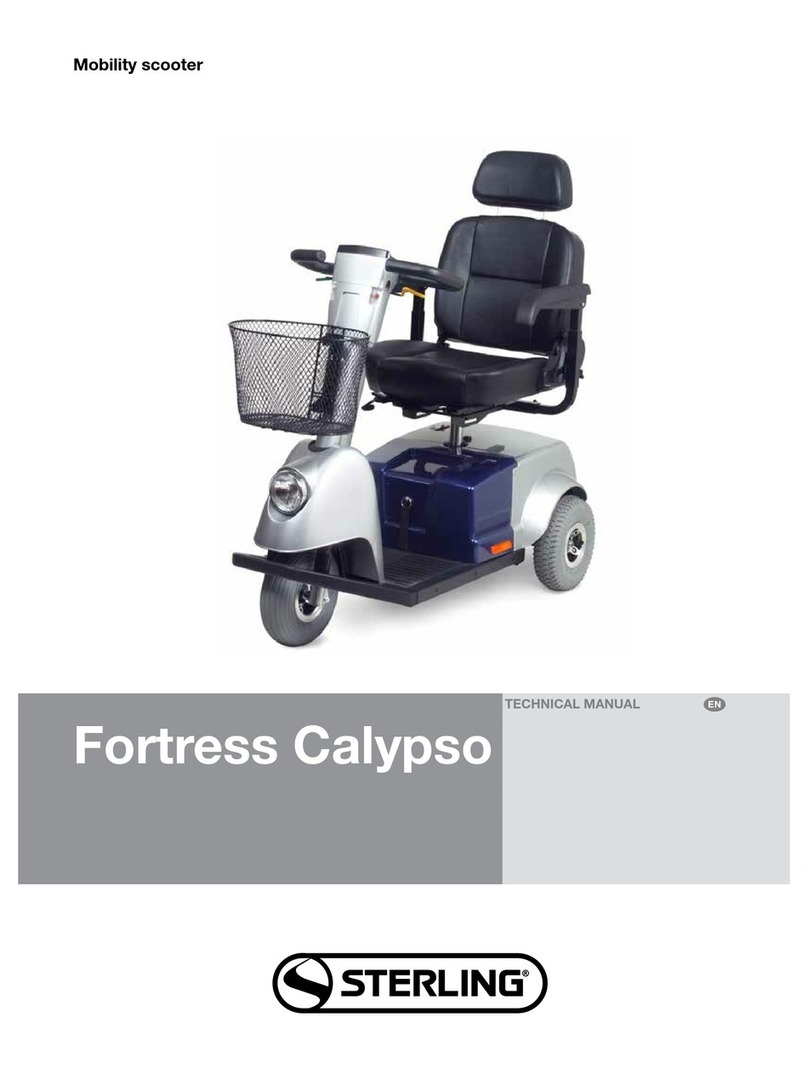
Sterling
Sterling Fortress Calypso User manual

Sterling
Sterling DIAMOND User manual

Sterling
Sterling Mobility Scooter User manual
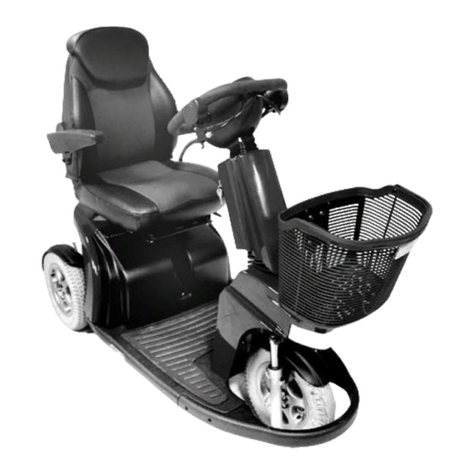
Sterling
Sterling Elite2 RS User manual
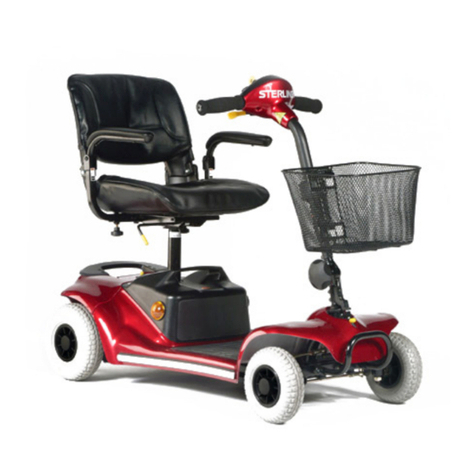
Sterling
Sterling Scooter User manual
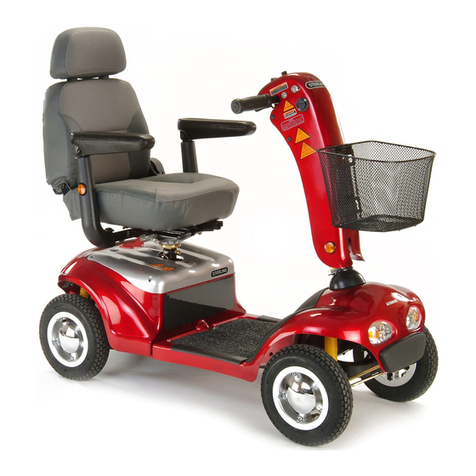
Sterling
Sterling EMERALD User manual

Sterling
Sterling S400 User manual

